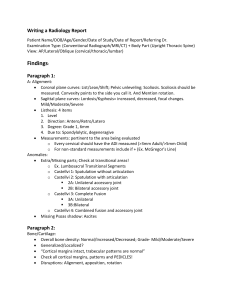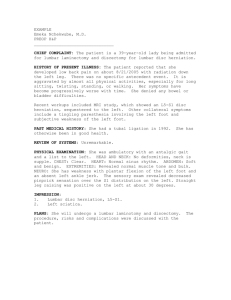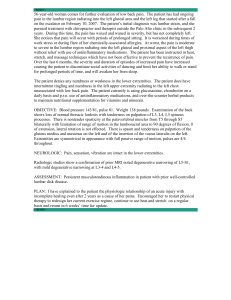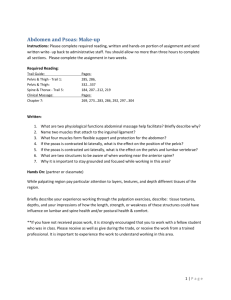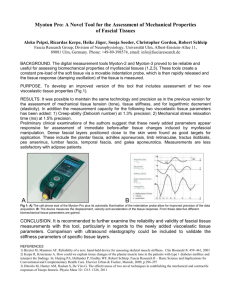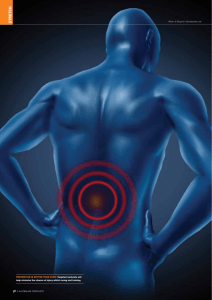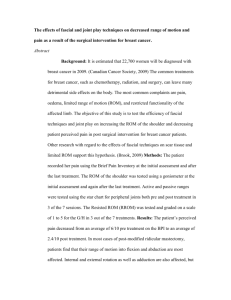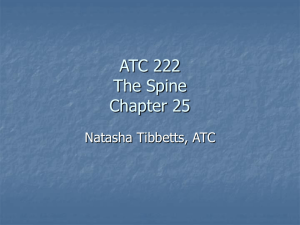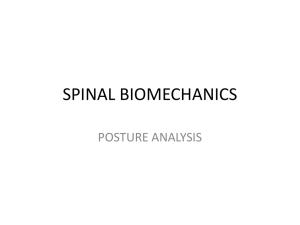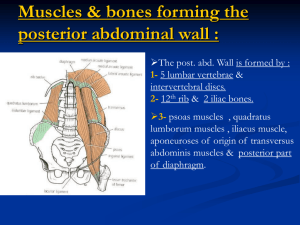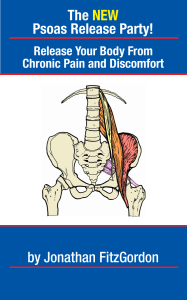What is the function of psoas major?
advertisement
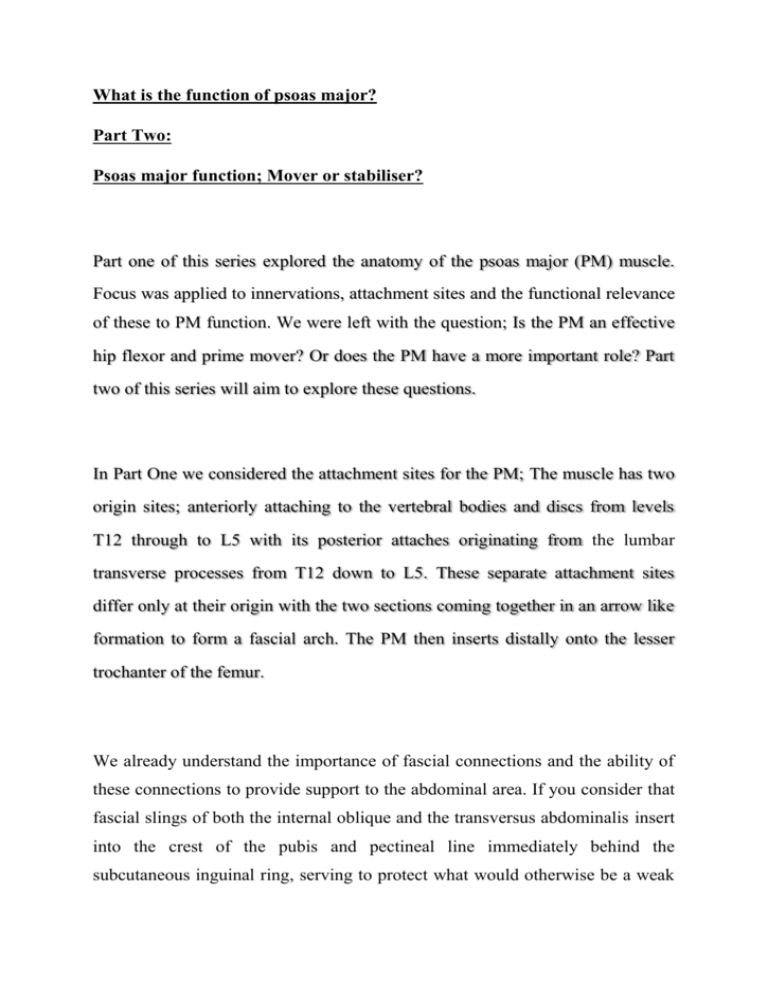
What is the function of psoas major? Part Two: Psoas major function; Mover or stabiliser? Part one of this series explored the anatomy of the psoas major (PM) muscle. Focus was applied to innervations, attachment sites and the functional relevance of these to PM function. We were left with the question; Is the PM an effective hip flexor and prime mover? Or does the PM have a more important role? Part two of this series will aim to explore these questions. In Part One we considered the attachment sites for the PM; The muscle has two origin sites; anteriorly attaching to the vertebral bodies and discs from levels T12 through to L5 with its posterior attaches originating from the lumbar transverse processes from T12 down to L5. These separate attachment sites differ only at their origin with the two sections coming together in an arrow like formation to form a fascial arch. The PM then inserts distally onto the lesser trochanter of the femur. We already understand the importance of fascial connections and the ability of these connections to provide support to the abdominal area. If you consider that fascial slings of both the internal oblique and the transversus abdominalis insert into the crest of the pubis and pectineal line immediately behind the subcutaneous inguinal ring, serving to protect what would otherwise be a weak point in the abdominal wall. Furthermore, this connection helps to form the posterior wall of the inguinal canal, along with the transversalis fascia. We know the inferior psoas fascia thickens as it passes inferiorly towards its pelvic attachment and becomes continuous with the pelvic floor fascia linking the transverse abdominals, internal oblique’s and the conjoint tendon (Jemmet et al, 2004 Fascial relations within the lower lumbar region mean that along with direct muscle attachments to the lumbar vertebrae/discs and the femur, indirectly the PM also has connections to the diaphragm, the muscles of the pelvic floor and the muscles of the lumbar spine (erector spinae, quadratus lumborum, multifidus, rotatores). Thus, activity in the PM has the ability to influence activity at all the above sites and structures. Psoas dynamics; Cylinder model The cylinder model is a well-established theory that incorporates the diaphragm, the pelvic floor along with the abdominal wall and the lumbar musculature. The positions of these structures helps form this cylinder shaped cavity. This cavity involves the diaphragm at the top and the pelvic floor at the bottom. The transversus abdominalis, internal and external oblique’s, quadratus lumborum and the lumbar erector spinae help complete the cylinder wrapping longitudinally around the lumbar region. The ability of one to increase pressure or stiffness of this cavity is the cornerstone of many ‘core stability’ programs. Dr Stuart McGill has shown in numerous published research articles that the ability to stiffen or brace the abdominals is a key factor in improving back related dysfunctions in both the lay and athletic populations. Thus, due to its position and direct and fascial connections does the PM have the ability to contribute to abdominal, pelvic and lumbar stability? The PM and the Pelvis As mentioned in Part one there is evidence to suggest that the PM doesn’t have the ability to shorten a large distance and due to the angle of biomechanical force the PM exerts questions have been raised regarding the phasic ability of the PM. Gibbons et al (2001) found evidence that the PM actually posteriorly rotates/tilts the pelvis rather than anteriorly tilt as was previously thought. The same study proposed that the PM therefore increases sacroiliac joint (SIJ) stability via both force and form closure. To add to this, increased EMG activity has been shown in the PM in activities such as upright standing, lifting and forward bending (Nachemson, 1966). All these activities increase the load on the SIJ. Is this the result of increased PM activity to provide force and form closure to the SIJ? Furthermore, EMG studies have shown increased psoas activity with spinal flexion, extension and side flexion. Bogdunk (1997) proposed these movements required the PM to act as an eccentric stabiliser. He agreed with the previous notion that due to the close angle of pull to the axis of rotation the PM offers little contribution to the above movements. Thus, the increased EMG was not a result of the PM working as a phasic muscle but was in some way stabilising during the movements of spinal flexion, extension and side flexion. Further work by Comberford (2010) suggests that longitudinal tension from the PM tendon helps centre the femoral head, quoting the PM as the supraspinatus of the hip joint. In enabling adequate centralisation then allows the ‘true’ hip flexors to work (rectus femoris, illiacus, sartorius, and the TFL). In conclusion it appears the PM may be more than just a phasic muscle, if it is one at all. I don’t think we can question, largely due to its fascial attachemnts the potential ability of the PM to help stabilise the lumbar, pelvic and hip regions. Part three in the series will look at how using the above evidence we can incorporate PM activity to improve stability within these regions.

